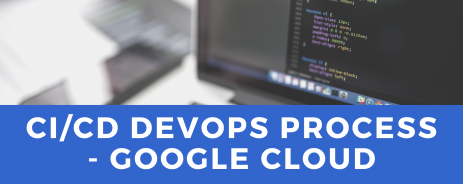
Is Your Company Ready for AI?
Artificial intelligence (AI) is certainly a buzzword — but it’s not only a buzzword. After all, buzzwords don’t have industry-wide transformational potential. AI is already changing the ways that we learn, search, code, and do business.
But before you jump on the AI bandwagon, you need to make sure that you understand the capabilities and limitations of the technology. You need to prepare your current systems for AI integration, and you need a long-term strategy for utilizing AI tools in ways that make sense.
In other words, you shouldn’t rush into AI. Here’s how you can determine whether your company is ready.

The First Question: Why Do You Want to Use AI?
New technologies are exciting, but they need to be leveraged appropriately. For example, predictive analytics aren’t a magic wand, and they’re not going to make your business more productive or successful unless you implement them strategically.
To that end, it’s helpful to think about how AI could impact various departments within your organization:
- Marketing. AI tools can deliver insights about customer needs, automate campaigns, and drive sales by analyzing historical data. A 2018 McKinsey analysis of hundreds of use cases predicted that AI would contribute the greatest value to marketing.
- Forecasting. AI tools can find patterns that predict changes in demand, enabling organizations to take advantage of opportunities for optimization. With sufficient info, AI can recommend price changes, order materials, and more.
- Uptime Optimization. In manufacturing, AI is capable of scanning for inefficiencies and identifying risks. With enough data, tools can accurately predict maintenance needs, locate potential disruptions, and provide human workers with the information they need to address issues before they impact uptime.
- Customer Service. Conversational AI can address customers directly and provide a human-like experience — though the technology isn’t perfect at this time (and certainly not appropriate for every customer service application). Still, customer service AI models can free up time for human respondents.
You don’t necessarily need to identify every potential use case for AI, but you should start with a general idea of what you want to accomplish. Are you trying to improve productivity? Reduce downtime? Enhance the customer experience? Attract more business?
Once you’ve considered the potential benefits, you can better understand how your current IT infrastructure might support (or interfere with) those use cases.
Preparing for AI: A Quick Checklist
The current class of AI tools use a variety of different technologies, but they’ve got one thing in common: They need a large amount of accurate data in order to deliver results.
If you can check off all of the boxes on this list, you’re in a great position for deployment:
NOTE: If you find any unchecked boxes below, consult a Blue Stingray engineer to build a strategy for your AI venture. Even older systems can accommodate straightforward predictive AI solutions. Learn More>>
- You’ve researched or spoken to a consultant about how AI tools can benefit your company.
- You are utilizing your current systems and data to optimize company solutions, and you are ready to automate these processes.
- Your IT architecture is a contemporary solution designed to meet the complexities of artificial intelligence demands.
- Your data is accessible via APIs(or something similar), structured, organized, and compatible with AI models.
- You’re ready to invest in AI training for your team.
- Your technical structure has the bandwidth to support AI.
- You’re prepared to manage the organizational changes from implementing AI.
- You have processes and employees in place to assist with monitoring and evaluating AI tools.
Below, we’ll be addressing several of these points in greater detail.
Maximizing Your Current Data for AI
 Artificial intelligence is excellent at delivering data-based insights. If you don’t provide enough data, however, the AI models won’t make as much of an impact.
Artificial intelligence is excellent at delivering data-based insights. If you don’t provide enough data, however, the AI models won’t make as much of an impact.
This is true regardless of how you’re using the technology. If you’re using generative AI to write text, you need to feed it a large amount of text to get anything close to usable — and if you’re using AI to predict changes in your supply chain, you’ll need quite a bit of historical data to generate accurate predictions.
To that end, you’ll need systems that collect and present data in a way that AI models can understand.
Key Questions to Consider:
- Is our data clean, structured, and well-organized?
- Will we need to export data from our current systems for use with predictive tools, or can AI access the data directly on an as-needed basis?
- Is the data siloed in different departments? For example, AI tools may need to access marketing numbers, sales figures, and engineering specifications — and that data may exist on very different systems.
- Do we have a consistent data strategy, and if not, how can we create one?
- Is our IT infrastructure scalable to accommodate future AI technologies?
- How secure is our data environment?
Many brands are confronting these questions the wrong way: Instead of addressing core issues with their data strategies, they’re throwing more AI at the problem. You certainly could use AI to structure and organize your data, but that’s not an effective use case; the better strategy is to start with a solid technical foundation and a strong data management policy.
This is where APIs come into play. APIs (Application Programming Interfaces) enable direct access to the data needed for AI, ensuring smooth data flow across different platforms. If your current systems have APIs that facilitate data access, that’s great — though you’ll still need to map data fields appropriately.
If systems don’t meet this requirement, they’re effectively siloed — their data cannot be easily integrated with other software or platforms. However, there’s always a solution; if you’re committed to creating a more robust data infrastructure, a data partner can help you carry out the necessary changes.
Team Readiness for AI Integration
 Everyone has strong opinions about AI — and different levels of aptitude, which can influence the results of an AI deployment project.
Everyone has strong opinions about AI — and different levels of aptitude, which can influence the results of an AI deployment project.
Technology is only as good as the people using it, so training and development should be part of your AI readiness plan. Your team must understand the limitations and the capabilities of the technology, which means understanding how the tools interpret data.
Key Questions to Consider:
- Is our team knowledgeable about AI and its potential?
- Are we investing in training to equip our team with AI skills?
- How receptive is our team to technological changes?
Don’t assume that your business culture is already prepared for AI. Some degree of organizational resistance is practically inevitable; this is the case with any disruptive new technology, but it’s particularly true given AI’s public reputation.
Focus on practical use cases and take steps to ensure that your leadership supports the deployment. Remember, the purpose of AI is to optimize the way that your business operates — not to replace human workers or to act as a shortcut that could damage the customer experience.
AI Isn’t Magic, But It Is an Extraordinary Tool
Preparing for AI involves more than just installing new software or adding a feature to your ERP platform; it requires leveraging your current data, ensuring your team is ready, having the right technical infrastructure, and championing change at the leadership level.
At Blue Stingray, we’ve helped companies manage the deployment of AI tools for years (though the current class of AI tools is certainly above and beyond the capabilities of earlier models). From implementing context- and user-based search functions in Adobe Commerce to automating manual work and improving data availability with custom apps, we’ve helped organizations prepare for the AI revolution — and create robust, scalable data infrastructures that will work seamlessly with future technologies.
If you’re ready to learn how AI can work for your business, we’re here to help. Connect with Blue Stingray’s experts to start your journey toward a more efficient, data-driven future.



